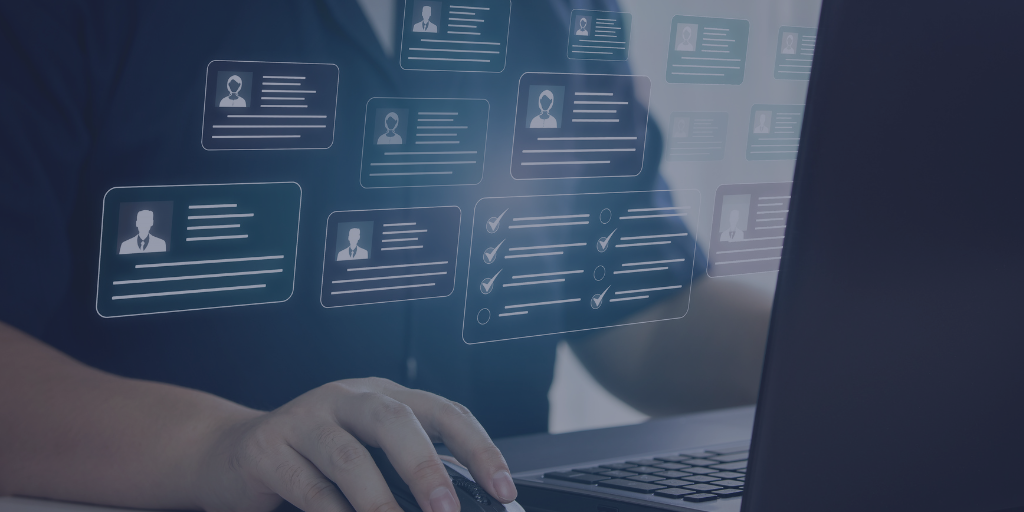SaaS Application Security Checklist & Best Practices

By OpenVPN Team
Software-as-a-service (SaaS) solutions have transformed how organizations run critical operations and store data — and for good reason.
For small and medium-sized companies, SaaS services offer the convenience of on-demand access to essential tools, without the need to build complex internal systems.
However, these advantages come with unique security risks. Potential threats such as data breaches and compliance violations can derail operations and harm your reputation if not handled properly.
This guide will show you how to protect your SaaS applications through practical security measures and a helpful checklist. You’ll gain a clear roadmap for preventing data leaks, staying on top of regulations, and keeping your teams safe from threats.
Read on for tips that fit tighter budgets and smaller teams. You’ll also find OpenVPN’s comprehensive checklist for SaaS application security. Let’s get started.
What is SaaS application security?
We have one basic principle when it comes to SaaS security: anything worth protecting should not be openly accessible via the internet to just anyone — that includes SaaS applications. Therefore, you should isolate SaaS applications from the internet, essentially making it a private application. This will help enforce zero trust principals. But how do you do this when the SaaS application is an external vendor?
SaaS application security involves putting specific controls and measures in place to protect online software services. These protections ensure that only approved users can access the application and that sensitive data remains safe during transmission and at rest.
When you sign up for a SaaS solution — whether it’s for document management, customer relationship management (CRM), or team collaboration — your company’s data is stored and processed on external servers that your provider manages. This is all the information worth protecting that we mentioned earlier.
Securing these services often involves encryption methods, user authentication, ongoing monitoring, and awareness of the provider’s security practices. You can think of encryption as a digital lock system for your online software, guaranteeing that you and your colleagues can work without worrying too much about data loss or infiltration.
Why is SaaS application security important?
SaaS providers typically handle infrastructure and software updates, but customers share some responsibility for security. Poorly managed credentials, unmonitored activity, or misconfigured settings can allow intruders to access the system.
When your data resides in the cloud, you must trust the provider to uphold strict standards — but that trust is not enough. You also need an internal framework to ensure your policies and controls are in place.
Key security requirements for SaaS
To confidently run SaaS applications, especially in smaller organizations with limited staff and budgets, you need to follow some basic requirements, best practices, and precautions. These can be configured with a VPN, like CloudConnexa.
- Allowlisting or whitelisting
Security settings for SaaS apps should allow logins only from configured IP addresses and block everything else (often called whitelisting or allowlisting). Using this setting allows you to reduce your attack surface from all internet devices to only the whitelisted IP address. Then, using allowlisting, you can make the allowlisted IP address equal to the VPN, such as Access Server or a network connected to CloudConnexa, and use the zero trust controls to give least privilege access to authorized users, thereby turning the public SaaS app into a private application. - Strong encryption
Encryption ensures that data moving between your users and the SaaS provider is unreadable to outside parties. Look for end-to-end protection so traffic remains secure, even when using public Wi-Fi. - Robust authentication
Basic login credentials are not enough. Multi-factor authentication (MFA) effectively adds extra steps — like a temporary passcode or a prompt in an authentication app — to confirm user identity. - Frequent monitoring
Regularly track user activities, system performance, and error logs. This information can help you detect early signs of suspicious behavior and address them before they escalate. - Access restrictions
Limit the SaaS features and data each user can see. For instance, finance staff members shouldn’t have free reign over sensitive product-development files. - Regular updates and patching
Outdated software poses a threat. Ensure that both your local devices and the SaaS application stay current with the latest security fixes. - Secure VPN connectivity
Tools such as Access Server enable you to create secure tunnels that keep connections private. This is especially important for remote teams and people working outside the office.
When these requirements are combined, you create a layered defense that’s harder for outsiders to break through. Even if one layer fails, others are still in place to prevent further harm.
Common threats to SaaS application security
Despite best efforts, threats persist. Here are four of the most common risks that SaaS customers face:
Poor access control
A significant portion of data breaches (a staggering 68%) involve a non-malicious human element, such as an employee falling victim to a social engineering attack or making an error, according to the Verizon 2024 Data Breach Investigations Report.
If an employee’s username and password are stolen or leaked, attackers can gain unauthorized entry unless additional safeguards, like multi-factor authentication (MFA), are put in place. For an IT manager, this statistic underscores the importance of strong password hygiene, well-defined login policies, and thorough logging of all access attempts.This is why using a VPN and allowlisting is so important.
Compliance challenges
Different industries face different regulatory requirements. Healthcare providers in the United States must align with HIPAA, while companies handling credit card data must meet PCI DSS guidelines.
Failure to meet these standards can result in fines and reputational harm. Consistent audits, record-keeping, and strict internal controls are key to navigating these requirements successfully. For example, if you work in healthcare, solutions like a HIPAA-compliant VPN can help you protect your data for more substantial compliance and a better patient experience.
Privacy and data breaches
Privacy concerns continue to rise. IBM’s 2024 Cost of a Data Breach report discovered that, from March 2023 to February 2024, the average cost of a data breach globally reached an all-time high of $4.88 million.
If you handle personal data, even a single leak could destroy trust — from your customers, employees, and partners. Not to mention how a breach can lead to lawsuits and hefty fines. A strong encryption policy and secure remote access connections help you avoid these costly setbacks.
Components of a SaaS security checklist
Many organizations rely on a SaaS security checklist to address these threats systematically. Such a list is a straightforward reference tool for confirming that all necessary safety measures are in place.
If you want a structured approach to security, download OpenVPN’s comprehensive checklist to ensure you leave no gaps uncovered.
Main components of a thorough checklist:
- Multi-factor authentication (MFA)
Verifies user identity by requiring an additional code or mobile prompt. - Threat monitoring
Tracks user actions in real time to detect unusual behavior. - Regular access reviews
Examines who has permission to view or modify critical data, removing inactive or unauthorized users. - Network segmentation
Splits your system into smaller parts so that a breach in one segment doesn’t spread everywhere. - Incident response plan
Provides a methodical approach to contain and resolve incidents, with clear steps for different staff roles. - Data encryption
Protects data at rest and in transit using robust encryption standards, reducing the risk of exposure even if an attacker gains partial access. - Logging and audit trails
Generates detailed records of user logins, configuration changes, and other key events, helping in compliance audits and forensic investigations.
Download OpenVPN’s SaaS Security Checklist for a full rundown of these components.
SaaS security checklists in action
Now that you know the importance of a SaaS security checklist, here’s how you can put it to work:
- Initial assessment
Review the checklist to see what requirements have already been met and what needs attention. This could include setting up multi-factor authentication or enabling logging features. - Implementation
Address gaps by working with team leads or stakeholders. For instance, you might add extra encryption through an additional VPN layer or train employees on safe password practices. - Monitoring and updates
Revisit the checklist monthly or quarterly to track your progress. If you adopt a new SaaS tool, use the same list to confirm that it meets your security criteria. - Ongoing education and training
Communicate the steps from the checklist to staff. Keep everyone informed on standard security protocols, from entry-level employees to senior management.
SaaS application security next steps
Securing access to SaaS applications does not need to strain your resources. By focusing on what matters — like encryption, authentication, and routine monitoring — you can safeguard vital company data without overspending your budget.
- Adopt a systematic checklist
Download and follow a thorough SaaS security checklist. It serves as a roadmap for addressing any vulnerability, no matter the size of your IT team. - Leverage OpenVPN solutions
When combined with a checklist, OpenVPN services become an essential component of your security setup. If you’re looking for a self-hosted VPN solution, Access Server gives you control over its deployment and upkeep along with MFA, access controls, user group-based authentication, and much more. OpenVPN can also do the heavy lifting with CloudConnexa, which comes with a host of built-in ZTNA and SASE security features.
As we mentioned earlier, both Access Server and CloudConnexa can help you protect your SaaS applications by isolating the applications from the internet, essentially turning them into private apps. By making a whitelisted or allowlisted IP address with the SaaS app that is equal to the Access Server or a network connected to CloudConnexa, you can use the zero trust controls in both to give least privilege access to authorized users.
- Train your workforce
A well-informed team is your first line of defense. Provide short training on maintaining strong passwords, recognizing phishing attempts, and promptly reporting anything suspicious. - Keep an eye on future growth
As your organization scales, the checklist remains a dependable reference. If you add a new SaaS provider, integrate it into the checklist review process before employees use it.
If you’re ready for more concrete steps, check out protecting access to SaaS with OpenVPN, where you’ll find further resources. You can also watch webinars about secure remote access to gain insights on broader network security.
How OpenVPN helps
OpenVPN has a long track record of helping businesses protect their data, especially when protecting access to SaaS apps. People in the industry use Access Server or CloudConnexa to securely connect remote teams and offices to SaaS services without exposing internal networks.
Whether it’s protecting sensitive patient, financial, or legal information that’s stored on your SaaS applications, OpenVPN can help minimize the risk of breaches with robust authentication measures, zero-trust enforcement, traffic monitoring, and more.
In each case, having a well-structured security plan paired with a business VPN solution such as OpenVPN significantly decreases the chance of data exposure.
Download the Comprehensive SaaS Security Checklist to kick-start the process. Start filling potential gaps in your security posture immediately, and arm your team with the knowledge and resources needed to protect critical data — no matter where they work or what device they use.

-2.jpg)
.png)